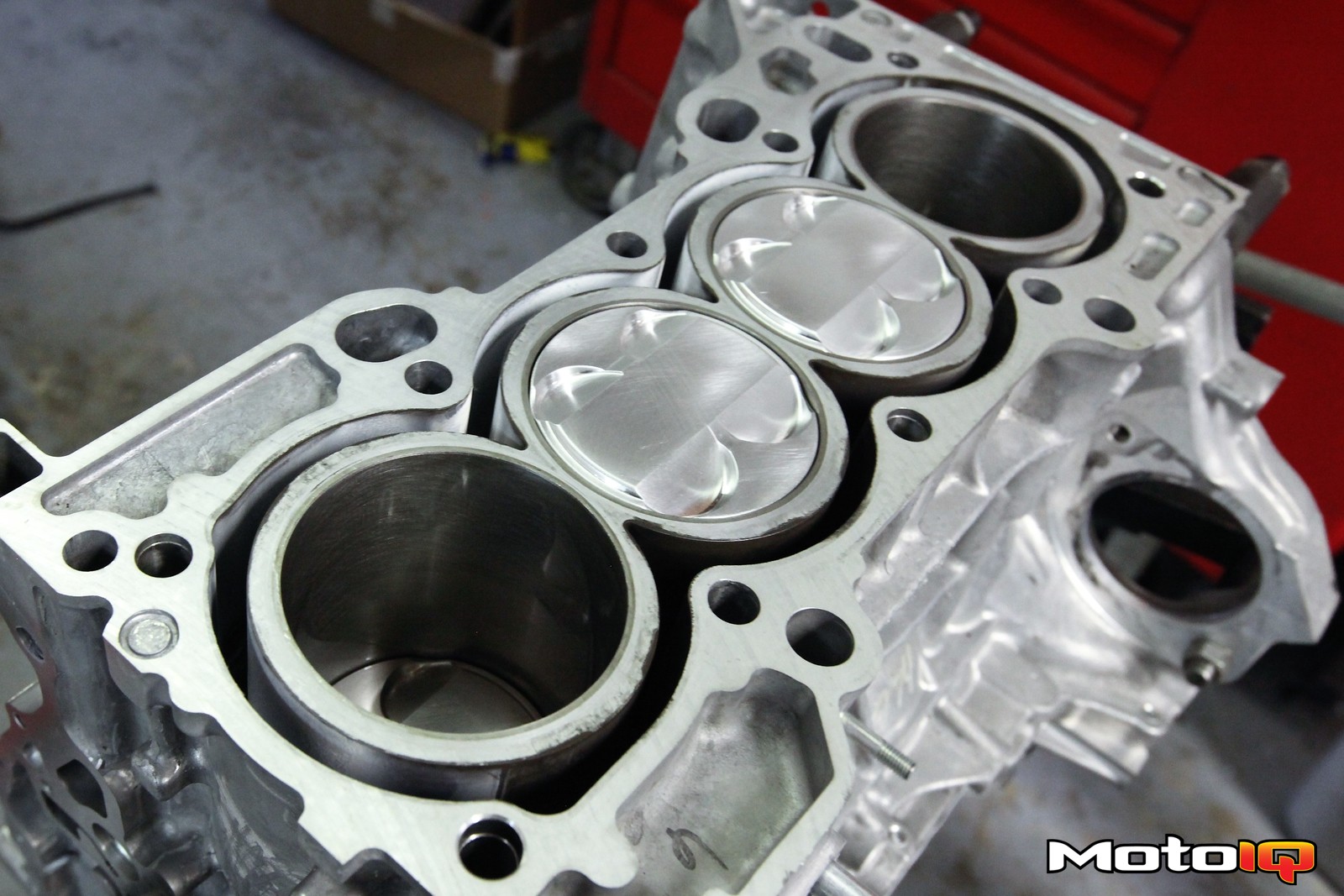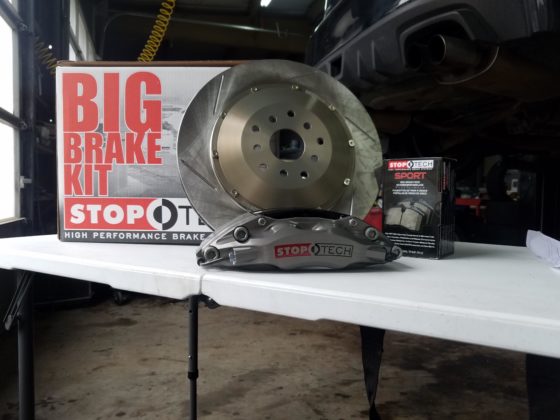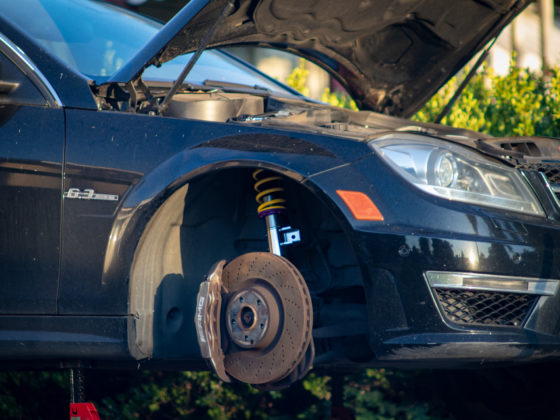
To get rid of the K24’s balance shafts we used 4-Piston Racing’s balance shaft removal kit. This includes aK20 oil pump, a K24 pump chain tensioner, chain, and chain guide. The balance shafts spin at 2x the engine speed and are responsible for a lot of oil heating and aeration while creating a lot of friction. The balance shaft help cancel an inline 4 cylinder engines inherit up and down shaking moments and have nothing to do with its dynamic balance so deleting them will not harm the engine.

The stock K20 oil pump begins to cavitate at 8000 rpm, heating the oil and reducing the pump’s flow. 4-Piston ports and smooths the pumps internal passages to increase oil flow by 25% and allow continuous operation above 9000 rpm. The pump has been tested to 11,000 rpm without issues.

One of the most important things often left out in an engine build is the windage tray. The windage tray helps strip oil off the rotating crank and rods and return it to the oil pan. The windage tray helps to free up power wasted on oil windage, reduce oil burning, lower oil temp and by helping keep more oil in the pan, improve lubrication by reducing the chances of oil starvation. The windage tray is part of the balance shaft removal/ pump installation kit.

For improved reliably we used ARP head studs, these replaced the original Honda torque to yield head bolts. The ARP studs are made of 8749 Chrome Molly and have a tensile strength of 180,000 psi, much stronger than the OEM bolts. They can also be tightened and loosened many times, unlike the stock torque to yield bolts. We used part numbers 208-4701

To help our engine balance at high rpm with its long 99mm stroke we used a Fluidampr part number 570601. Instead of the traditional tuned inertia ring bonded to the damper’s inner hub with elastomer, the Fluidampr’s inertia ring is free to move inside its housing that is filled with a thick viscous silicon fluid. By being free to move, the Fluidamp is able to work more effectively to damp out torsional vibration over a wider rpm range than a traditional elastomer damper. It is both frequency and amplitude sensitive being that the more the crank twists the harder it works. Long-stroke engines can use all the help they can get with torsional vibrations at high rpm and we have had great luck with the Fluidampr on racing K24 engines in the past.




6 comments
Hoping to do the same k24/k20 soon. Looking forward to the rest of the build!
Just wondering something: Why do you always choose the K24 bottom end in the states? Is that just for the longer stroke and therefore more displacement?
Assuming a K20 bottom end is the same, why not build a K24 bottom, with K20 bottom internals and longer conrods? (because the deck height is 19,5mm taller on the K24 engine). Smoother running and more RPM potential? Redline should theorectically be around 12000 RPM that way, and smoother running because of the smaller stroke? Sure, you loose a bit of torque that way, but you would gain top end power if you use the RPM potential with a high duration cam.
Or am i not seeing something here?
You make good points here, but I think in a street engine, spinning to 12k rpm is not feasible. If you can make more power at a lower rev range, and still have the ability to make power at 8000rpm why bother?
Meh, depends on how you build something. I had a pet project that was stolen years back: A-series engine. The BMC/Rover/Austin/Morris/MG one.
Long story short: 1046cc OHV engine (designed with 3 crank bearings in the late 1930’s as a generator on the back of a tank), capable of 12.000RPM (Normal is about 5500 RPM) Stil normally drivable. Even legal to drive with emissions here in Europe. Idled at 800 RPM without being overly lumpy. Although I must admit that it was running on BP Ultimate 102 RON.
In a way its compairable to an S2000. Just a regular engine down low until it wakes up once past 4500 RPM really. My point being: RPM limit at which an engine makes power does not neccesarily mean it’s a mut down low. Its just a different mindset when driving it. It isn’t as lazy driving as a bigger displacement engine though. So it would be feasable, but the biggest concern is going to be to find hypereutectic pistons that can handle the stress. Forged aluminum just expands to much. You either get a pinching engine op high, or burning oil if the engine is starting up.
And to answer your question: For me its always the challenge of building it. But it is a lot harder to do it right once you start using it in day to day life.
How much was this k20 Engine built $$$
JE piston makes nice products but their website is not one of them, it’s top notch web design from 1998 and filled with outdated/missing information.
I learned through e-bay that they now make coated asymmetrical pistons for BPs because JEs website still lists that piston as an uncoated round skirt.